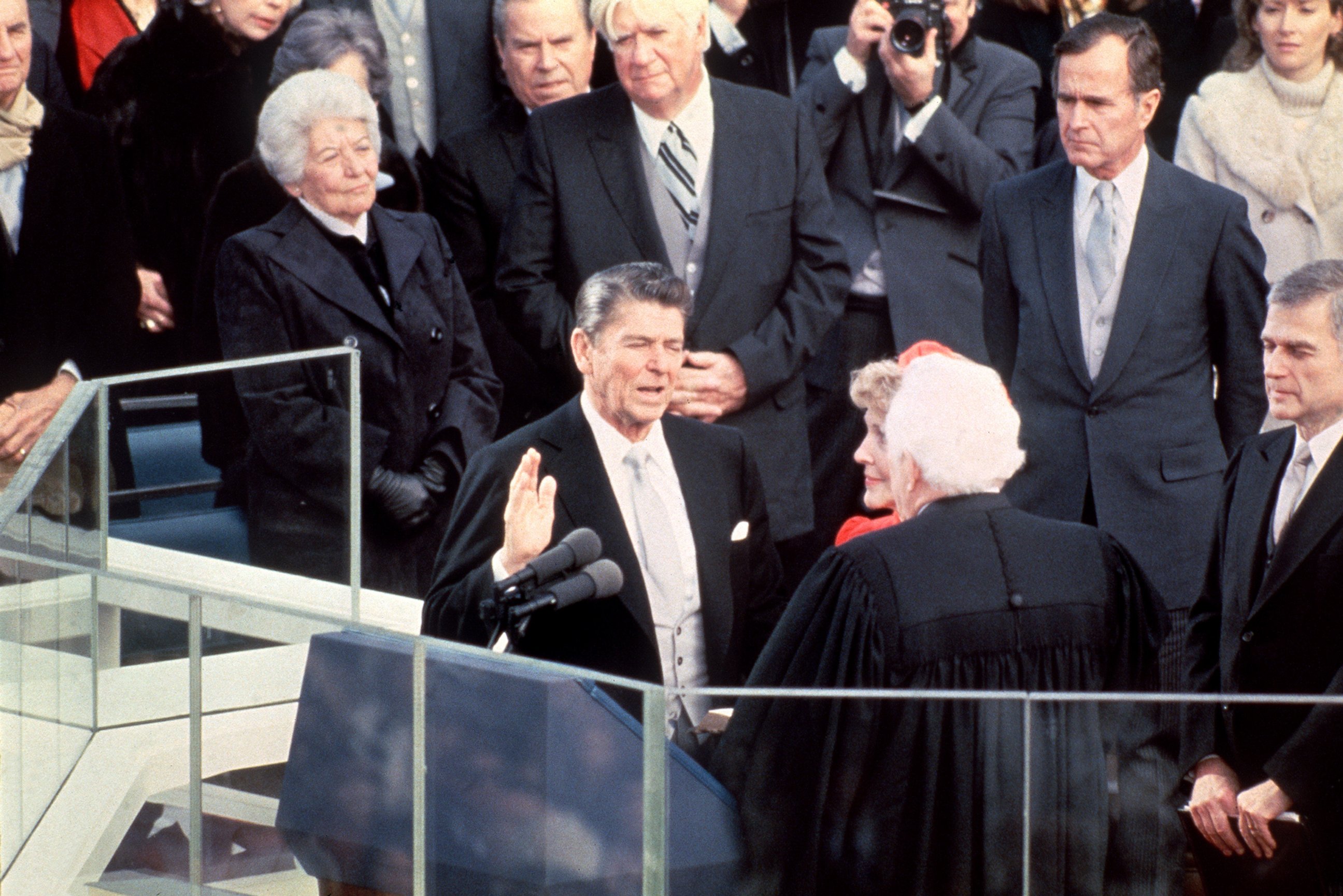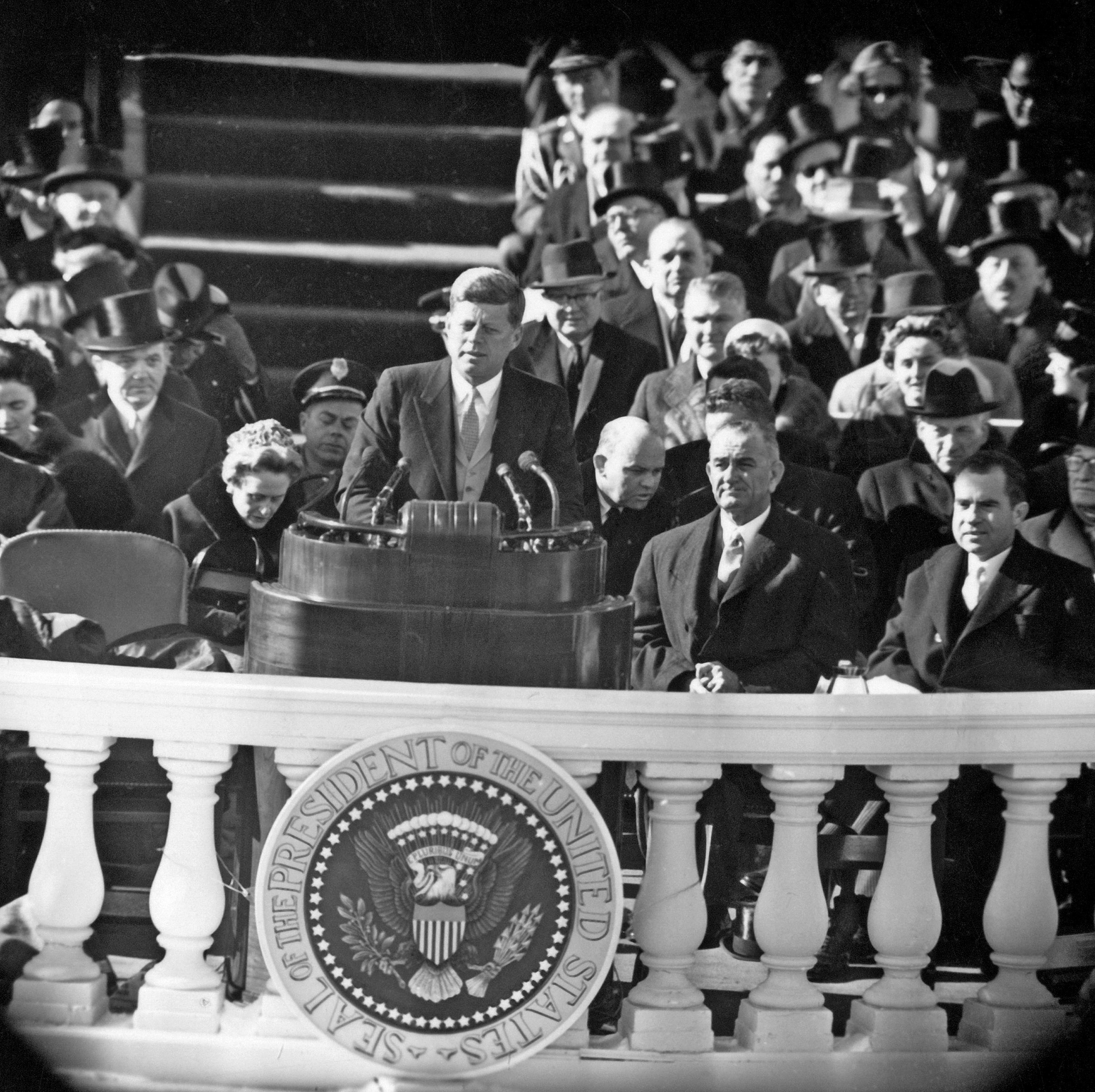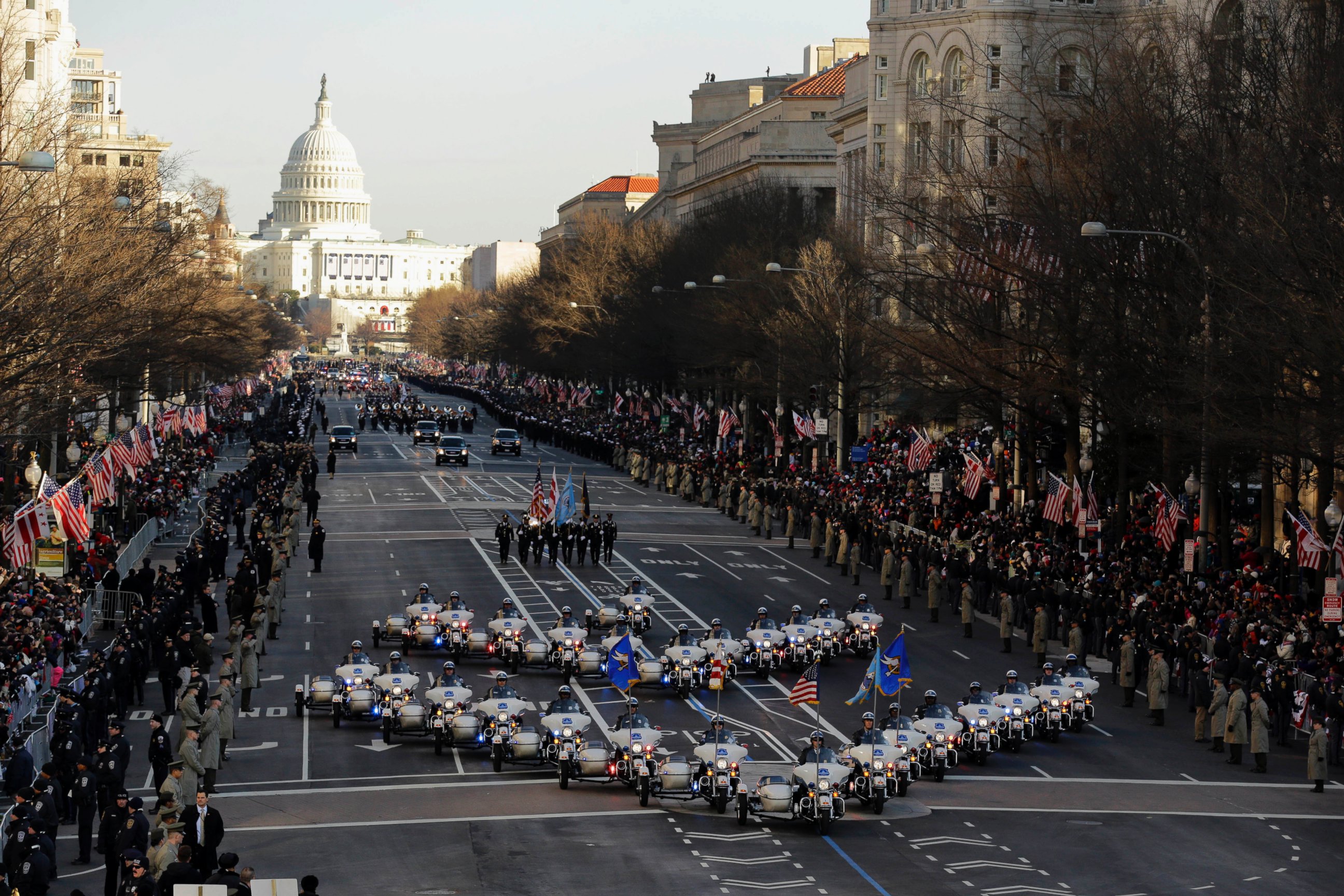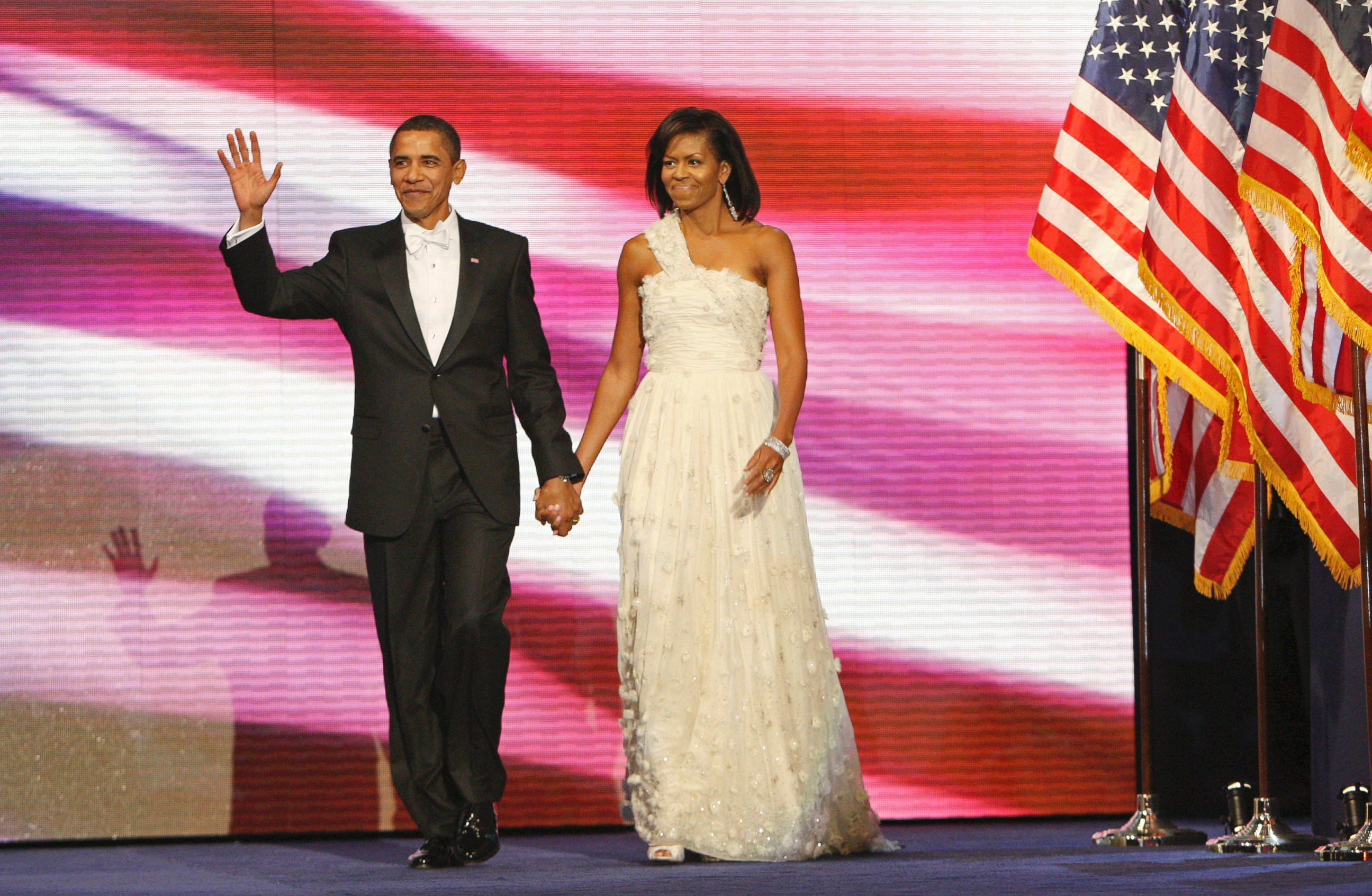History of Change and Tradition on Inauguration Day
Inauguration has been a ceremony steeped in tradition.
— -- Presidential inaugurations have been steeped in tradition and ceremony since the nation’s first president, George Washington, took the oath of the office. But from the parade processions to the swearing-in ceremony, those traditions have changed over time.
Here are a few lesser-known facts about the history of presidential inaugurations:
Inauguration Day wasn’t always on Jan. 20
George Washington, then a 57-year-old general, was sworn-in on a clear and cool day from the balcony of the Federal Hall in New York on April 30, 1789.
But it wasn't until his second inauguration as president that the traditions began to take root. Washington's second inauguration was held on March 04, 1793 and incoming presidents had their ceremonies on the spring date for many years -- unless it fell on a Sunday.
James Monroe was the first president to deal with such a situation. After consulting with the Supreme Court justices, Monroe decided to hold his inaugural ceremony on Monday, March 05, 1821.
But after a change made to the 20th Amendment of the Constitution, Franklin D. Roosevelt was the first president to have his inauguration ceremony on Jan. 20 in 1937.
Most of the swearing-in ceremony is not required, it’s just tradition

The only Constitutional requirement for the inauguration ceremonies is that the president takes his oath of office.
The Bible isn’t a requirement for the Oath of Office, nor is having a Chief Justice administer the oath.
Theodore Roosevelt didn’t use a Bible for his swearing-in on Sept. 14, 1901. John Quincy Adams used a books of law for his inauguration.
It also doesn’t matter who holds the Bible. In starting a tradition that has occurred at every inauguration since, Lady Bird Johnson was the first incoming-first lady to hold the Bible for her husband while he took the oath of office.
On March 4, 1797, John Adams became the first president to receive the oath of office from a Chief Justice of the U.S. Supreme Court -- Chief Justice Oliver Ellsworth.
The Chancellor of New York, Robert Livingston, and Associate Justice, William Cushing, had the honor of administering the oath of office at George Washington’s first and second inaugurations, respectively. Several other kinds of officials, who were not Supreme Court justices, have also administered the oath of office.
Judge Sarah Hughes swore in Lyndon Johnson, making her the first woman to administer the oath.
The Inaugural speech

William Henry Harrison spoke for about 1 hour, 45 minutes on March 4, 1841. His speech was the longest since -- 8,445 words.
George Washington delivered the shortest speech -- only 135 words at his second inauguration on March 4, 1793.
Yes, there have been hiccups
At the presidential inauguration of Herbert Hoover in 1929, first lady Grace Coolidge and incoming first lady Lou Henry Hoover delayed the ceremony for about half an hour. The two were without escorts and got lost in the confusing hallways of the U.S. Capitol on their way to the west front where the ceremony would start.
During John F. Kennedy’s inauguration, the lectern caught fire during Cardinal Richard Cushing’s inaugural invocation. Secret Service rushed to the front and put out the fire caused by the electric motor that’s used to adjust the lectern’s height.
The parade

The first organized parade was for James Madison in 1809, but before that there were presidential processions.
Local militias accompanied George Washington in his trip from Mount Vernon in Virginia to New York City for his first inauguration ceremony in 1789.
The only parade known to have been canceled because of the weather was Ronald Reagan's second in 1985. It was the coldest Inauguration Day to date. The noon temperature was 7 degrees Fahrenheit, but the wind chill temperatures were in the negatives. The freezing temperatures made proceeding with the parade dangerous.
Even when there was a blizzard for William Taft’s inauguration in 1901, the parade was not canceled. Workers had to clear snow from the parade route.
The largest parade -- and the longest -- was held for Dwight D. Eisenhower's first Inauguration in 1953. The parade featured 73 bands, 59 floats, horses, elephants and civilian and military vehicles in a procession lasted 4 hours and 32 minutes.
The first Inaugural ball

The first Inaugural ball was for James Madison’s inauguration on March 4, 1809. It was held at Long's Hotel in Washington D.C. Tickets cost $4 and 40 were sold.
President Bill Clinton had a record 14 inaugural balls held in celebration of his second inauguration in 1997.
Somber Inaugurations
Inauguration ceremonies are typically happy celebrations, but there have been exceptions.
Two months before his inauguration, Franklin Pierce and his wife lost their 11-year-old son in a train accident. Because they were still in mourning, Pierce canceled his inaugural ball.
Four presidents were assassinated and each of their vice presidents had to take the oath of office shortly after.
The day after Abraham Lincoln was killed, on April 15, 1865, Andrew Johnson took the oath of office.
James Garfield was shot and later died on Sept. 19, 1881 and Chester Arthur was sworn in the next day.
In 1901, McKinley had struggled for a week to stay alive after suffering a gunshot to the stomach. Theodore Roosevelt rushed to be in Buffalo, New York only to find President William McKinley dead and was sworn-in as president on Sept. 14, 1901.
On Nov. 22, 1963, Lyndon Johnson took the oath of office aboard Air Force One after the death of John F. Kennedy.
Four other vice presidents were sworn-in after the sitting president died from illness. And one vice president, Gerald Ford, became Commander-in-Chief after President Richard Nixon resigned.




